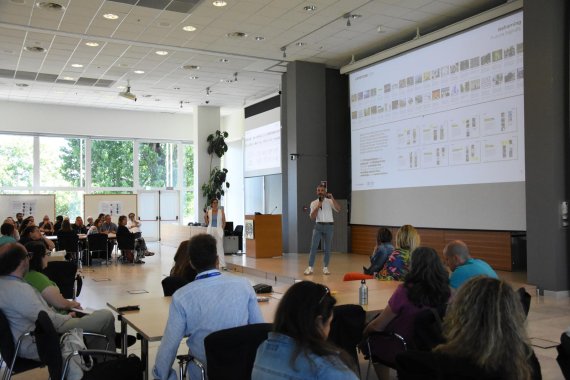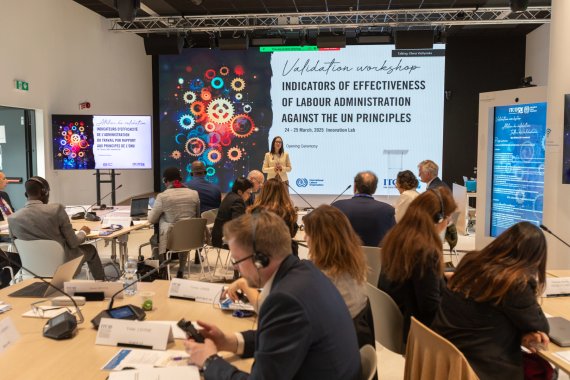Microlearning
Microlearning
How to reaching millennials in the workplace? The use of microlearning to provide learners with daily, bite-sized chunks of content that are flexible and personalized
12 Octubre 2019

We find ourselves in the year 2030, and a little more than half of the workforce in Europe and the United States is made up of Millennials. With the rise of flexible jobs and the demand of employees to work more freelance, and likely for several employers at the same time, job hopping is at its top. These job-hoppers move on unsafe social ground and the need for training on social protection has never been higher. Though since they are so volatile, it became difficult for both governments and workers’ organizations to reach them.
The profile of learners has also changed over time. As attention spans shrink, we have shifted towards learning solutions that educate and train workers that are more distracted than ever. The large majority of organizations are relying on short digital lessons that workers can access at their convenience. Microlearning has officially entered the learning picture.
The core principle of microlearning is to provide learners with daily, bite-sized chunks of content. It’s a way of tapping into the needs of a shifting learning environment. Portable microlessons are flexible and personalized. Learners have the freedom to engage while drinking a coffee, commuting to work or even during a flight. Short spurts of knowledge can be digested in a busy work environment or at home, wherever convenient.

Breaking up content into microlessons increases learning outcomes, makes it easier to author and also easier to engage with. The method is most effective on specific tasks or to rapidly fill performance gaps. It uses videos, quizzes and other interactive elements and can be used to learn how to bake a pizza or even learn a new language.
With the growing demand of Millennials over the past 15 years for high flexibility and variation of jobs, now half of the workforce consists of freelancers changing jobs every couple of months and combining different projects at different organizations. This way, they keep learning new things without having the feeling of getting stuck in a routine. The fixed term staff is able to focus on more substantial, long-term tasks with added meaning, while these flexible contractors can fill the gap by performing short-term and specific executive activities. A win-win situation.
Human resource practitioners have jumped on the bandwagon. They work closely together with organizations, identifying the needs for freelancers and offering the exact online course adapted to the direct needs of freelancers. Their recruitment webpages do not only offer information about open positions but also provide a dashboard of online courses preparing the candidate for the task. Microlearning has proven to be very cost effective in security training. Today, all UN agencies use two-hour online courses – divided into 5 to 10-minute pieces – to be completed by applicants within a one-week deadline, at their own pace.

Microlearning is even used to promote ethics at work, mental and physical wellbeing and to support freelancers in building up social security. Nobody loses valuable time on training and with the introduction of the 6-hour workday for all short-termers in the United Nations system, the contractor can now use his extra free time to start learning for the next job.
The functionality of microlearning doesn’t stop at the workplace. With the migrant crisis becoming a now permanent feature of the southern European landscape, volunteering has gone mainstream. Volunteers helping out in their free time or creating small NGOs are not professionals and have never been exposed to these kinds of crises. Since it would be a logistical nightmare to train this army of volunteers face-to-face, the interagency taskforce easily reaches those groups with online courses, giving them a foundation in humanitarian principles and essential codes of conduct and skills.
Other development organizations have teamed up to provide voluntourists – tourists combining travels in under-developed countries with volunteering – with basic training on development principles and conduct, as well as on how to use social media in an appropriate way. Microlearning functions as a pull technology, allowing people to engage rather than pushing them into a certain structure. That’s the only way it can work to reach these volunteers with whom you have no psychological contract.
Using these principles of push and pull on a professional workforce as well, and adapting the tone of engagement have the advantage that people commit voluntarily, on their own time and where they want. It appeals to the “best self” rather than to rely on imperatives. And that’s probably microlearning’s greatest force.
This article is fictional and is a prediction of our environment horizon 2030. The Centre has created a microlearning prototype on Work for Human Development in 2017. It’s our goal to further explore this learning tool to create and improve sustainable learning solutions for the future. Read on about microlearning at: blog.itcilo.org/tag/micro-learning
Originally published in the Future of Learning magazine.


